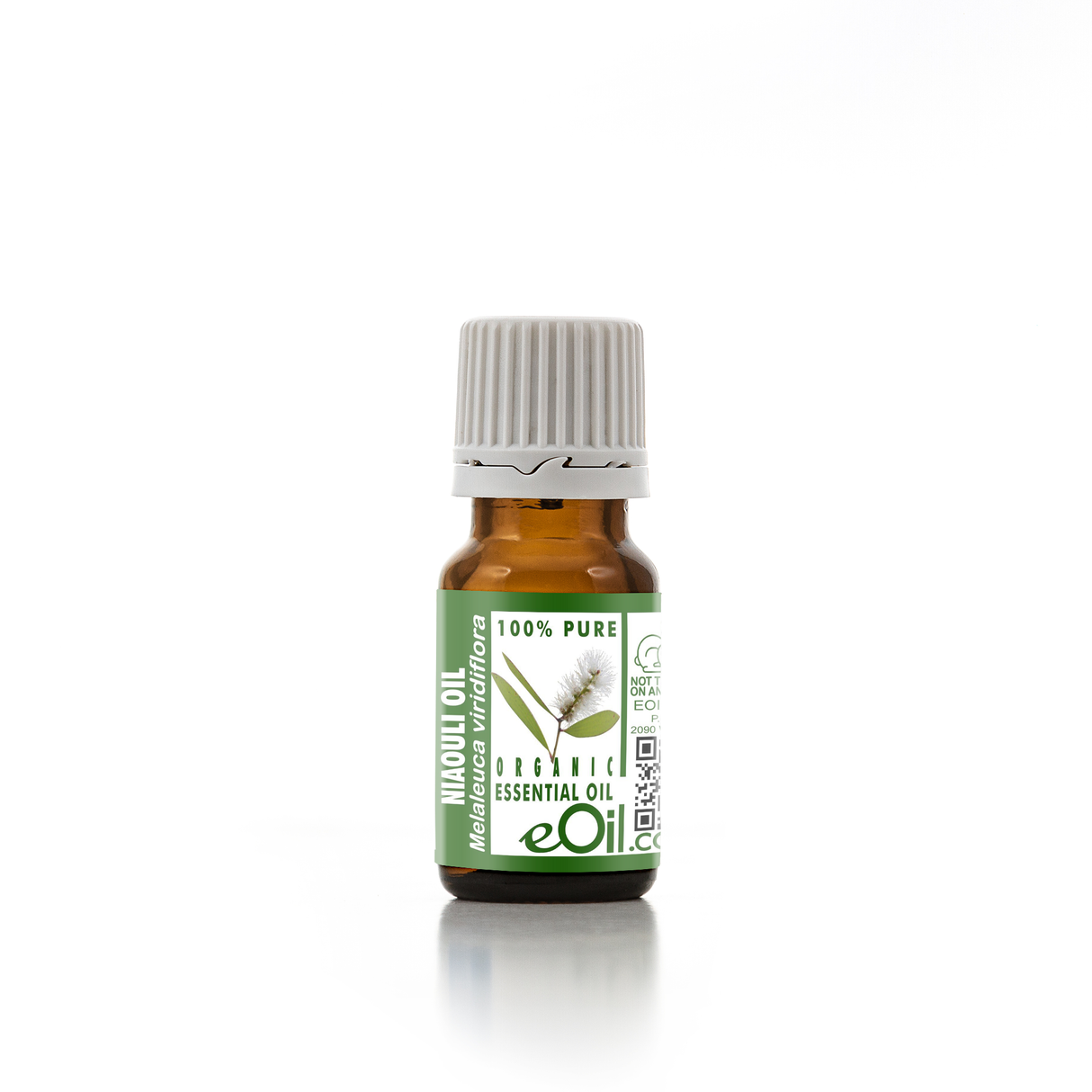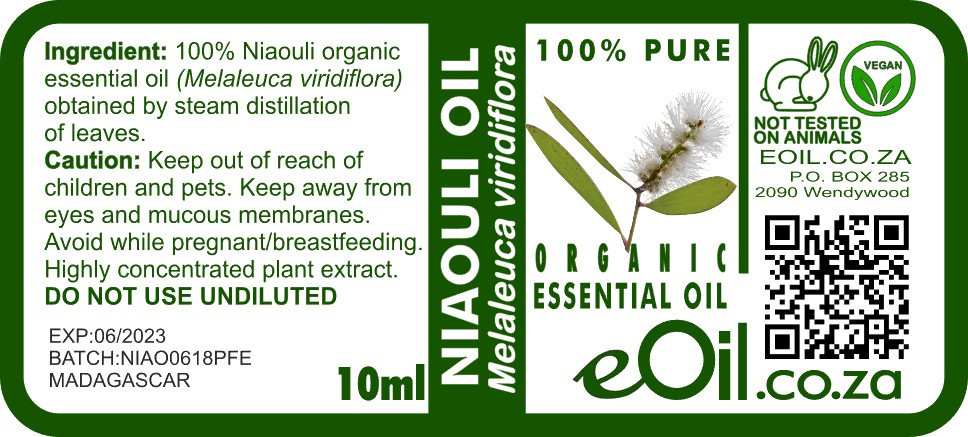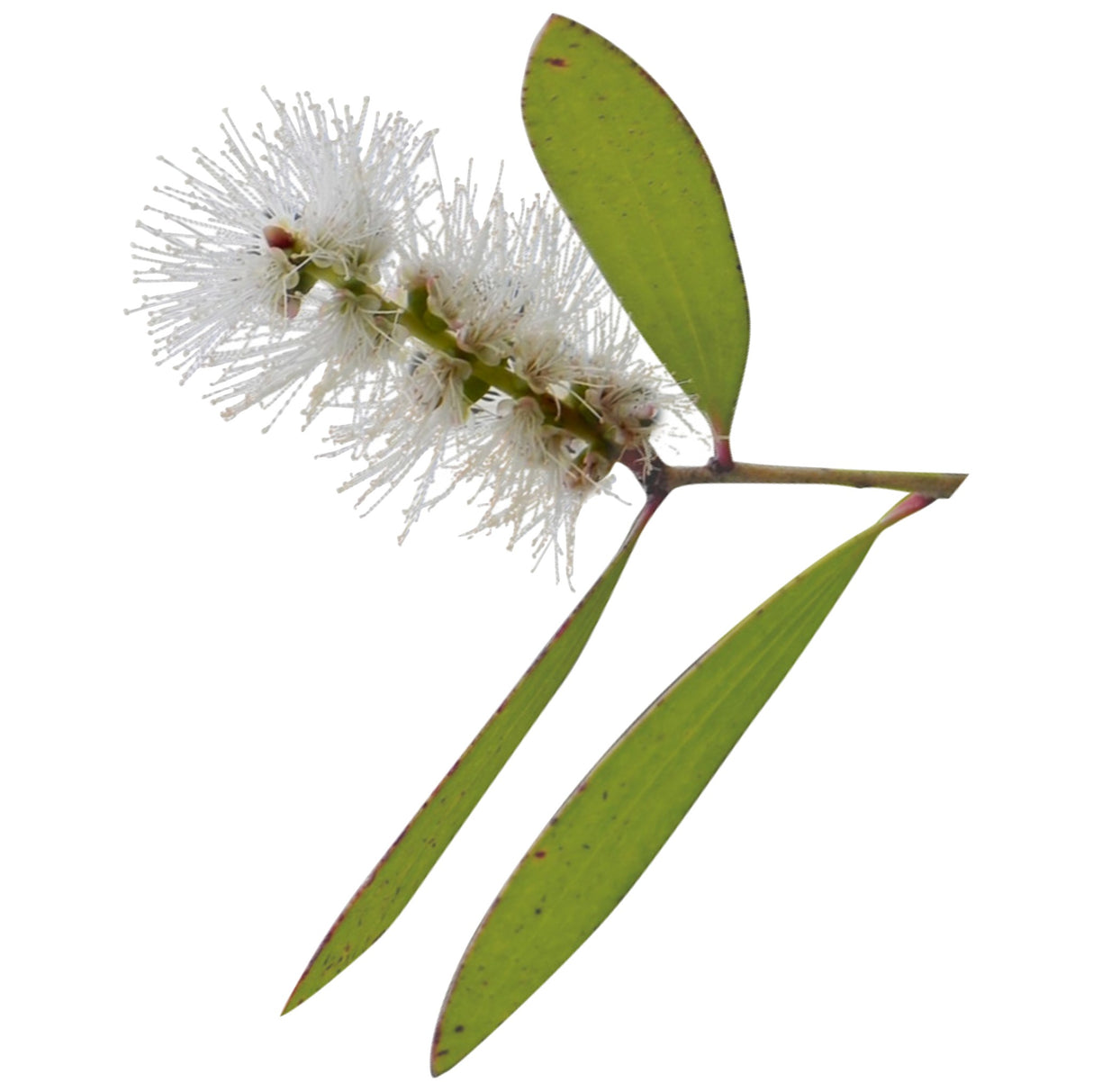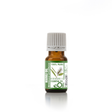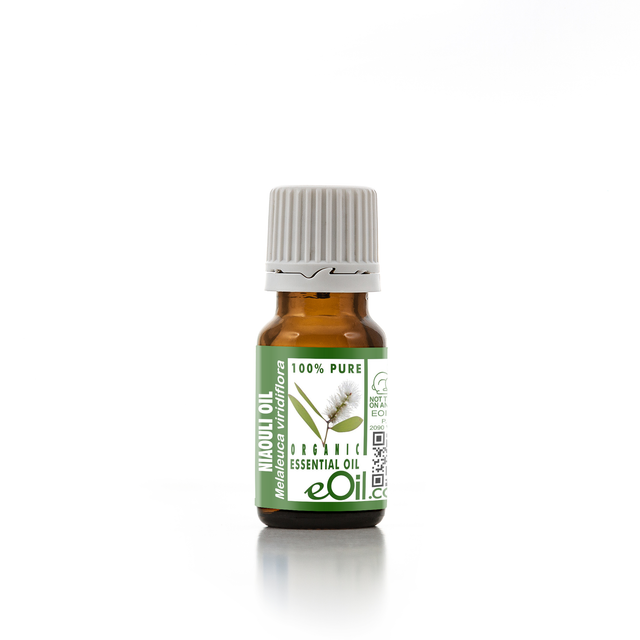Niaouli Essential Oil Organic
Niaouli Essential Oil Organic - 10 ML is backordered and will ship as soon as it is back in stock.
Description
Description
Niaouli organic essential oil is steam-distilled from the leaves of Melaleuca quinquenervia (broad-leaved paperbark), a close relative of tea tree native to South Africa and the South Pacific.
Well-loved for its fresh, camphoraceous, and faintly lemony aroma, this gentle oil is a household staple for respiratory support, immune boosting, natural skin care, and safe, effective cleansing.
IDENTIFICATION
NCI name ; Melaleuca Quinquenervia Viridiflora (Niaouli) Leaf Oil
CAS number 8014-68-4
SKU code ; EO-NIA-0010
EXTRACTION METHOD ; Steam Distilled Essential Oil
PARTS USED ; Leaves
ORIGIN ; South Africa
COMMON NAMES : Broad-leaved Paperbark, Paper Bark Tea Tree, Punk Tree
APPEARANCE : Colorless to pale yellow liquid
ODOUR NOTE : Fresh, strong, fruity-lemony, camphoraceous-cineolic odour
QUALITY : 100 % pure and natural organic essential oil.
Active ingredients: 1,8-cineole, α-terpineol, viridiflorol
STORAGE CONDITION ; Store in a cool dark place
Melaleuca viridiflora syn. Quinquenervia
With 1,8 cineole
Niaouli produces a remarkable essential oil, both perfectly efficient and extremely well tolerated.
Just like Lavender, Niaouli essential oil has an extended range of properties and is considered to be one of the top 10 essential oils to keep in any household.
From the same family plants as Tea tree ( Melaleuca alternifolia), the superb Niaouli essential oil is softer to use on sensitive skins and is more suited to help with respiratory discomforts in adults, than tea tree essential oil.
DO NOT USE IF YOU ARE CURRENTLY SUFFERING FROM AN HORMONE-DEPENDENT CONDITION (Breast, prostate cancer…)
INSTRUCTIONS OF USE
Fantastic for this use +++
Acceptable (suitable) for this use ++
Tolerable (not great for this use)+
Don't use for this purpose --
Massages & body care
- Body massage use 1 to 6 drops essential oil for 10 ml carrier oil (0.5 to 2 % concentration) +++
- Face care use 1 to 3 drops essential oil for 10 ml carrier or base (0.5 to 1 % concentration) +++
- Body care use 2 to 6 drops essential oil for 10 ml carrier or base (1 to 2 % concentration) +++
- Bath First mix 10 to 15 drops of essential oil with 20 ml vegetable glycerine or 1 cup of Epsom salts +++
- Compresses +++
Diffusion
- Steam Inhalation -- add 5 drops of essential oil to a pot of hot water / wet inhalation from a bowl of hot water; dry inhalation from a few drops on a tissue ++
Others
- Cooking
- Homecare
For more detailed information, please go check this LINK TO Instructions of use essential oils page
DO NOT USE UNDILUTED and seek medical and specialist advise when in doubt
SEE OUR PAGE ON PRECAUTION - HOW TO USE ESSENTIAL OILS SAFELY
REPORTED BENEFITS & PROPERTIES
Reported benefits & properties:
- Selective antibacterial (streptococcus. Pneumococcus, enterococcus)
- Stimulates immunity
- Antiviral
- Antifungal
- Anti-inflammatory
- Anti-mycobacterial
- Expectorant
- Circulatory, Decongestant
- Skin tonic
TRADITIONALLY USED FOR
Traditionally used:
- As a star essential oil for flu, blocked noses, stuffy noses, and sinusitis symptoms in winter
- To help clean skin infections and cold sores
- To soothe sun and other burns
- To clean, clear and tone congested, acne, pimple prone skins
BLEND WELL WITH
- To help breathe better: Eucalyptus radiata, Ravintsara
- To calm skin irritations and itching: Lavender, Citronella and Peppermint
- For heavy legs: Cypress, Patchouli
- To purify Tea tree, Thyme
CAUTION
Do not use during the first 3 months of pregnancy / breastfeeding
Keep out of reach of children and pets.
As a general rule, always perform a skin patch test before using your essential oils for the first time.
DO NOT USE UNDILUTED and seek medical and specialist advise when in doubt

